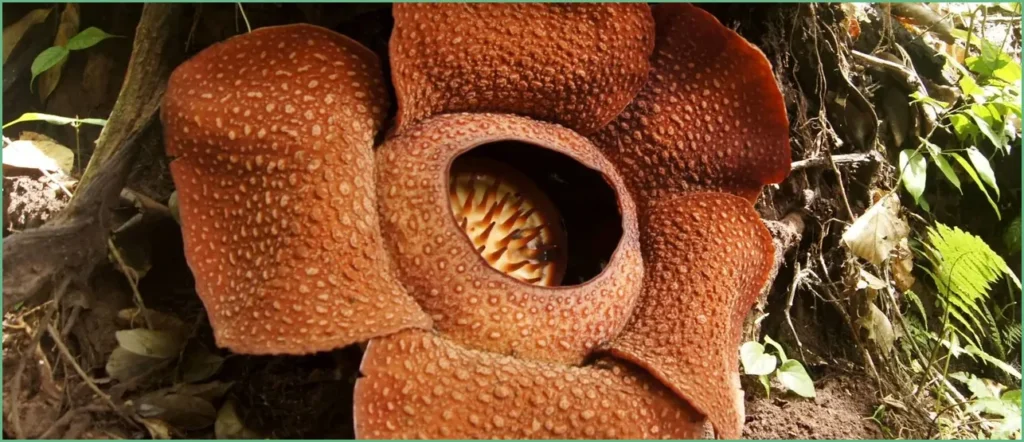After a 13-year hunt and a hair-raising trek through tiger country, a research team in Sumatra finally found one of the planet’s rarest flowers: Rafflesia hasseltii. The discovery prompted raw emotion in the field as an Indonesian conservationist watched the bloom unfurl and broke down. That moment, captured on video, has since spread beyond the jungle, drawing attention to a fragile, little-seen corner of the rainforest.
The lead fieldworker, Septian Andriki, described an intense, overwhelmed reaction when the flower opened. “When I saw her start blooming, I just broke down,” Andriki said. The ranger who was with him reacted with shock and disbelief: “The ranger thought I was possessed.”
The expedition was no casual hike. Team members pushed through nearly a full day of travel across remote terrain, aware that they were moving through areas where tigers are present and where rescue would not be straightforward. They faced fading batteries, thick forest, and the long odds that a tip-off could lead to nothing but empty jungle; still they pressed on.
After years of searching, that persistence paid off. “After 13 years, a 23-hour journey, risking tiger attacks, nearly dead phone batteries, I couldn’t talk. I just cried,” Andriki said. The quote captures both the physical toll of the quest and the emotional release of finally finding something presumed gone or lost.
Rafflesia hasseltii is a parasitic plant that blooms directly on the forest floor and does not produce leaves, stems, or roots in the conventional sense. Its life is tied to host vines, and the flower itself is a single, startling structure that appears briefly and is notoriously hard to predict. Because of that ephemeral schedule and the plant’s rarity, sightings are exceptionally scarce.
The flowers in this genus are famous for their size and smell: individual blooms can reach over three feet across and weigh more than a dozen pounds, and they emit a scent reminiscent of decaying flesh. That stench is an evolutionary trick to lure carrion-feeding insects, and it gives the plant an unsettling nickname among naturalists. In the case of Rafflesia hasseltii, that combination of oddity and scale makes every confirmed sighting a significant event.
Video footage taken by expedition members caught the discovery in an unguarded, human moment, and the clip has drawn attention far beyond specialist botanical circles. Chris Thorogood, deputy director of the University of Oxford Botanic Garden, was part of the expedition and filmed the tear-streaked reaction that later circulated online. The recording turned private relief into public fascination.
Scientists say long gaps between sightings are not rare for plants that bloom so briefly and live so covertly, but the rediscovery underscores how much of the rainforest remains poorly surveyed. Many Rafflesia species are vulnerable because they rely on intact habitat and the presence of their host organisms. A single successful sighting can reshape understanding of local biodiversity and conservation priorities.
Field teams hope the moment will spur renewed interest in protecting the habitats where Rafflesia and other rare organisms live. Observations like this one give researchers vital data about bloom timing, distribution, and the tiny ecological relationships that support such a dramatic flower. The find is a reminder that even well-studied regions can still yield unexpected wonders when people on the ground keep looking.
WATCH:
